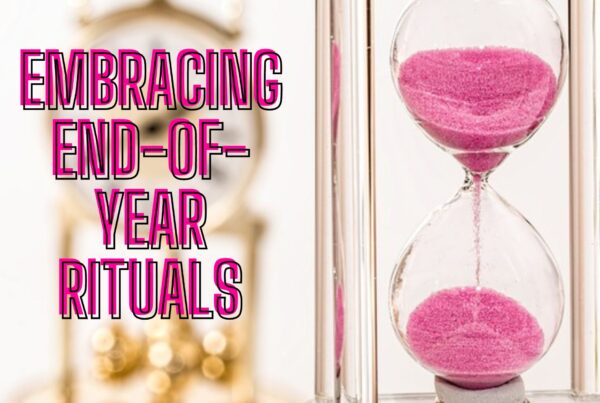The Mindfulness Toolkit
Developing Your Mindfulness Toolkit
Our life is going to be filled with inevitable challenges. Every day, we run the risk of experiencing uncomfortable situations and feelings. One of the key aims of therapy is always to help people develop their own coping strategies. Part of that is something I call ‘the mindfulness toolkit’. Practicing these tools can help to experience your thoughts and feelings in a different way.
Experiencing Reality
A common reminder I provide is that we don’t experience reality directly; we perceive our thoughts about it. As the old saying goes, ‘perception is reality’. When we explore deeper, we understand that our ‘reality’ is an internal construct, formed from the thoughts and feelings we generate.
Take anxiety as an example; anxiety is an internalised future projection where your mind creates a worst case scenario. Your mind does this so convincingly that your body responds as though it is happening right now. This kicks in the Amygdala, which is the part of the brain that the controls the fight, flight and freeze function. As a result, you experience the full feeling of anxiety.
Interestingly, many people believe they can’t control their anxiety. They often say, “I don’t have any power over the anxiety” even though it’s being generated within themselves.
Engaging In a Mindfulness Practice
There are compelling reasons to adopt a mindfulness practice, particularly to combat maladaptive thinking styles.
Being Present to the Current Moment
Firstly, the mindfulness practice will bring you present to the current moment. Instead of being forced into a negative future (anxiety) or dwell on a negative past (depression), it allows you to practice being in the now – the only moment that actually does exist.
Becoming an Observer of Your Thoughts
Secondly, the mindfulness practice will allow you to practice becoming an observer of your own thoughts. Instead of hooking into the thought and believing it as ‘real’, you can begin to detach from the thought and feeling, and recognise that it is just a thought.
Taking Your Mind to the Gym
Thirdly, a regular mindfulness practice is like a mental gym exercise. In much the same way you would go to gym to build physical fitness, a regular mindfulness practice helps to build thought fitness. When you can choose which distraction to focus on (the unhelpful thought or the breath), it can help to develop a fundamental difference in the relationship that you have with your thinking.
The Importance of Using Your Mindfulness Toolkit Daily
That’s why daily practice is crucial; attempting to use mindfulness to cope with distressing thoughts as they occur is not likely successful. Similar to physical fitness, it requires consistent effort but yields significant benefits.
Watch this short video where I talk about these three main benefits further.
The Beginners Guide to Experiencing Mindfulness
Many beginners tend to start too ambitiously with long practice sessions. It’s better to begin with simple five-minute exercises.
I usually guide beginners through the following steps in my practice:
- Begin by listening to the sounds in the room. Bring in a sense of curiosity with this, like you’re a scientist who is hearing these sounds for the first time. Allow them to come to you, like an ambient soundscape and just notice each sound as it comes forward into your awareness.
- Shift your focus now to your breath and notice the feeling of the air coming in and leaving the body. Notice the feeling of the chest rising and falling. Notice the feeling of the warm air as it leaves the nose.
- As this happens, you may notice thoughts coming and going, trying to ‘hijack’ the mind. As the thoughts come in, notice and acknowledge them, let them go, and gently bring your focus back to the breath.
- As you do this, you may choose to count the breathes, or to imagine the thoughts passing by like cars passing by a building or leaves floating down a stream. Just allow the thoughts to come and go, and bring the focus back to the breath.
- Continue this exercise working through a cycle of breathing. Each time the thought tries to hijack the mind, gently redirect your focus back to the breath. This is training the mind which ‘distraction’ you wish to focus on; the thought or the breath.
- After a few moments, you can begin to end in the same way you began, bringing the focus back to the sounds in the room. Allowing those sounds to step forward and engage with them with a sense of curiosity.
- After a while, you can allow your focus to come back to the room, stretch and allow the eyes to open.
These steps let you anchor in the now, observe your thoughts, and choose distractions mindfully.
Exploring the Variety of Mindfulness Practices
Naturally, this isn’t the only mindfulness technique, but it’s certainly one you can practice anywhere given your breath is always with you.
I personally enjoy conducting my mindfulness routine to the backdrop of ocean sounds. Others might find mindfulness in taking a walk while losing themselves in the rhythm of music.
Mindfulness is NOT About Relaxation
Many people find mindfulness exercises relaxing. However, relaxation is not the main goal of mindfulness. If you feel relaxed, that’s a bonus. The aim is to observe the feeling, acknowledge it, and let it pass naturally.
This is a point that can often confuse people who use mindfulness as a ‘coping mechanism’. What they’re doing pushing away uncomfortable thoughts and feelings – or in psychological terms, experiential avoidance. The goal isn’t to do that though. Instead, the goal is to observe our thoughts and feelings, acknowledging their intensity, while refocusing on what truly matters.
Connecting With Your Awareness
Mindfulness fosters awareness of your thoughts and feelings, allowing you to notice them without resisting. Often, people feel overwhelmed by their thoughts and feelings, attempting to push them away. But by observing them and focusing on what’s meaningful to you, you can shift your relationship with those thoughts and feelings.
Bringing In Self-Compassion
Remember to practice self-compassion. Some days you may easily focus on the breath, other days, thoughts may feel overwhelming. Embrace these experiences as part of the process, reducing frustration through self-compassion.
As someone wisely said, when you realize you have more control over your thoughts and feelings than you believed, their sting lessens. Although complete elimination may not be possible, you can certainly change your relationship with them.
Download your FREE Mini-Mindfulness Meditation by simply clicking here.
Book Your FREE 20 Minute Consultation With Release Hypnosis NOW!
You may also like to read:
Release Making Hypnotherapy Accessible During COVID-19
The Top 3 Limiting Beliefs That Hypnotherapists Have Around Technology
Isn’t It Time To Tell That Smoking Habit To Butt Out Of Your Life?
How To Get The Best From Your Online Hypnotherapy Session








